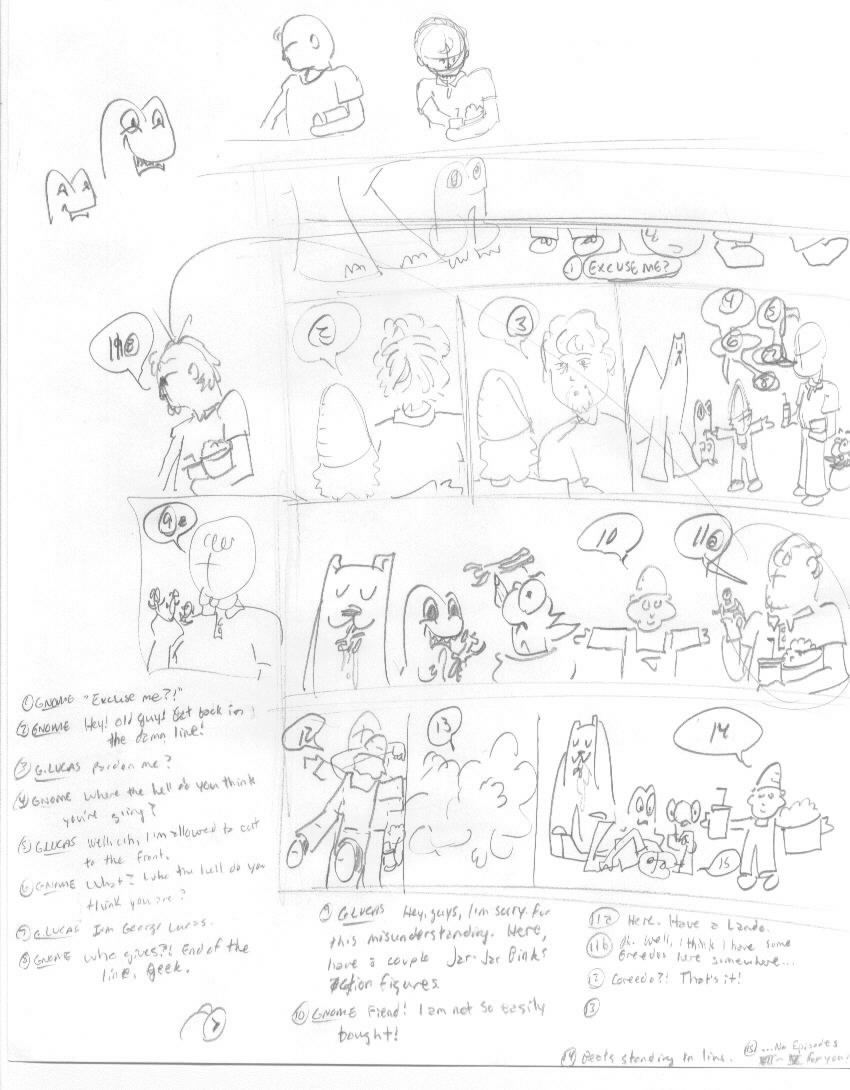
Part of the process of creating an individual "Caseous" comic strip is to start with scripting and storyboards. A storyboard consists of rough sketches and paneling to give an initial idea of what the pictures will look like and how the action of the cartoon will flow. Usually accompanying these storyboards are thumbnail sketches of specific drawings to get a better feel before committing them to the finished product.
In this example, we take a look at an early "Caseous," in fact, the third one ever. Entitled "Bribes" and guest starring George Lucas, the finished cartoon is as follows:

Now here is the storyboard. The panel breakdowns roughly show the direction of the story. As you can see, modifications are made along the way; for example, the tossing in of a separate panel on the left-hand side of the storyboard, separated from the others. Along the top and left side of the storyboard, you will find a handful of thumbnail sketches. These were intended to help "flesh out" particular facial expression or body movement to make the final product go smoothly. Rough dialogue is along the bottom of the storyboard, the main difference being a little less swearing from Gnome.
